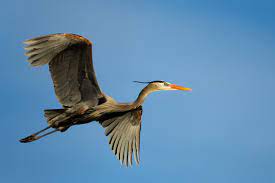Exactly what happened when the Spirit descended on Jesus after his baptism like a dove? Or, in the bodily form of a dove, as John more insistently describes it? It’s a scriptural moment we typically gloss over with a metaphorical shrug. Maybe there was some bird involved on the shores of the Jordan, but surely that’s just a symbol, yes?
Mark Wallace, Swarthmore professor of religion and environmental studies, takes this scriptural moment as much more than an exercise in symbology. Instead, in his 2019 book, When God Was a Bird, Wallace argues that the baptism narratives are quintessential manifestations of a second incarnation. Just as Jesus is God in human form, so the dove (actually a pigeon—long story) is the Holy Spirit enfleshed in a bird. The implications, Wallace believes, are both profound and urgently needed.
Wallace is one of numerous Christian theologians engaged in a decades-long process of figuring out whether Christianity can rightfully show up at the ecological party. Christianity has often enough operated as more of an obstacle to deep connection with the more-than-human creation, having devolved—some argue—largely into a “sky-God tradition” insistent on God’s transcendence and the superiority of spirit over matter. As a result of this tendency toward dualism, Christianity often gets written off (sometimes deservedly) as an enemy of environmental protection and climate action.
In response, Wallace describes his purpose as an effort to “cut against the received misunderstanding of Christianity as a disincarnational religion.” Instead, he posits that “animism is Christian faith’s lost treasure” and he invites us into the “second naivete” of “biblical animism.”
What is Christian or biblical animism? Well, animism in general is not what we’ve been led to believe, Wallace argues, making a decent history-of-ideas case that the sharp opposition between animism and monotheism is more of an eighteenth- and nineteenth-century construction than a fair assessment of animistic worldviews. This constructed caricature, moreover, was designed to instantiate the superiority of Western epistemologies by painting “primitive” peoples as pagan, violent, pantheistic, and childlike—thereby justifying the Western colonial project.
“Christian animism,” by contrast, “is simply what happens when a committed Christian engages the world and each creature as alive, sentient, and related, rather than soul-less and ontologically inferior.” (Here Wallace is quoting Shawn Sandford Beck.)
So far so good. Understanding the world this way hardly seems too much to ask. Yes, the divine presence imbues all of creation. Yes, the Holy Spirit sustains the existence of all things. These ideas are familiar in theology as well as alive in our personal piety—think of hymn lyrics like “He shines in all that’s fair; / In the rustling grass / I hear him pass; / he speaks to me everywhere.”
Wallace wants to push the implications, though, beyond the nature-is-pretty niceties and consider more seriously what the “double enfleshment of God in human and avian modes of being” might mean. He does insist that he is not promoting pantheism, but panentheism. God is in the created world, but also exceeds the created world. Nevertheless, his aim is to motivate Christians to perceive God more deeply and pervasively in the birds, the plants, the rocks, the wind—everything. Only if we see the whole creation as God’s fleshy presence—the theory goes—will we care for it enough to get off our duffs and address the climate crisis.
I find Wallace’s central proposal intriguing and mostly convincing. His readings of Genesis 1 (“the Spirit broods”), Exodus 3 (the burning bush), Numbers 21 (the whole snake-on-a-stick affair), Acts 17 (“live and move and have our being”) and numerous other passages offer playful and persuasive evidence of the Bible’s comfort with a more animistic view of the world. Case in point: a long examination of the healing story in John 9—the one involving mud and spit—presents Jesus as a “shamanistic” healer and reveals the fact that the Greek word for spit is the delightfully onomatopoetic ptuo.
I also found myself surprisingly convinced by Wallace’s proposal that the Bible itself resonates with the so-called Gaia hypothesis, the idea that the earth is a living organism with the ability to suffer, rejoice, and even exhibit a kind of intelligence. Passages from the prophetic literature, along with, of course, Romans 8, seem even more striking when read from this perspective. I had to agree that chalking these passages up to “that’s just poetry” now feels like a too-stingy reading of the some of the Bible’s most soaring words about the earth.
Wallace weaves his readings of scripture with cameos by some philosophical heavy-hitters, including Martin Heidegger, Julia Kristeva, René Girard, and more. He also commits long sections—productively in my view—to Augustine and Hildegard of Bingen, examining how Christian animism is expressed in their work. A whole chapter explores the nature-religiosity of John Muir’s writings, too. Meanwhile, Wallace opens and closes each chapter with his own nature writing, describing his nearby Crum Woods or the Delaware River Basin, for example.
While I enjoyed Wallace’s experimental structure and his efforts to calibrate boldness and orthodoxy, some sections of the book were less convincing. I felt Wallace’s enthusiasm getting away with him, for example, in the treatment of Jesus in the Gospels. The problem, for me, was precision in his close reading. For instance, do we really know that Jesus “identified” with sparrows? And while I suppose it’s reasonable to imagine that Jesus loved flowers, does the text actually say that? And sure, Jesus was deeply connected with agrarian life and the moods of the Sea of Galilee, but you could probably say that about almost anyone in that region in the ancient world. And then there are moments where an attempt to be provocative seems to fall rather flat: “when we look into the black pupils and brightly colored irises of a common pigeon, we are looking into the face of God.”
I quibble with these moments because Wallace’s project is premised on extremely careful attention to language. After all, the whole argument rides on the distinction between a mere metaphor (“like a dove”) and some kind of actual divine enfleshment. In other words, we are pondering here what, precisely, language signifies. So I found myself wishing at times for more meticulous accuracy in the way he presents his case. To describe the extermination of the passenger pigeon, for example, as something that “deadens God’s nearness and intimacy to each of us, running the risk of effacing God in our time as well” seems reasonably strong. But to describe environmental destruction on the same page as “deicide” seems exaggerated and inexact. Effacement and deicide are not the same thing.
Then there are the unresolved issues that exceed, I think, the scope of the book. I’m left wondering, for example, why we have to claim the earth is God in some sense in order to care about it. Is our love for God so cold that we cannot be committed to the earth’s thriving simply because God loves it? Or how about this one: If we claim that “all flesh is sacred, that all nature is blessed, that all things are holy”—which I’m happy to do—then what do those words even mean? Does sacred have any meaning if it applies to absolutely everything? I really don’t know. The term “person” is another puzzler. I see the term applied by various writers to oaks and possums and lakes and even the whole earth in an attempt to secure protections for these entities. Why is our human imagination so limited that we have to call something a person before we value it? Here I think we are using language to collapse our perceptions rather than expand them. Well, none of this is Wallace’s problem, and perhaps these are all musings for another day.
In any case, despite my grumpy mutterings, I do appreciate Wallace’s bold and experimental theology, the way he plays with terms, makes proposals, practices what he describes as “subjunctive knowing.” And I’m definitely there for truly beautiful summations like this:
“As God beatified the world through the reality of Jesus’ existence at one time, so also is God, through the gift of the Spirit, continuing to endow the world with abundant blessing today. Herein the world is redeemed. Herein all things are suffused with grace. Herein the whole Earth is full of God’s glory, as Isaiah sings (6:3). In this extravagant benefaction, the world is a Spirit-imbued habitat of illimitable benediction.”
Wallace’s Christian animism seeks to expand our perception of a God far more extravagant, illimitable, and near than we are able to comprehend. In the season of Emmanuel, God with us, that is surely a good thing.
Mark I. Wallace, When God Was a Bird: Christianity, Animism, and the Re-Enchantment of the World, Fordham University Press, 2019. Thanks to Tim Van Deelen for recommending this book to me.





